Crate training
Done right, crate training is possibly the best thing you will ever do for your dog. Crate training is a very popular way of keeping puppies safe and is a highly effective tool to fast track toilet training.
The dog comes to see the crate as his own space, his den, his safe-haven, and his favourite place to sleep. Some puppies love their crates immediately, while others need a little time to acclimate. Our labradors are crate trained very early, and by the time you pick up your puppy from us, he will already be familiar with a crate.
Most dogs quickly choose a small area, such a corner of a room, or under a table, or near a couch where they like to relax. The key is to make the crate the dog’s favourite retreat and associate the crate with as many positive and relaxing experiences as possible.
You must plan and be aware of your puppy’s needs including their need for exploration, play, food and water, and toileting so that the dog is only placed in his crate when all his needs have been met.
Crate training techniques
Make the crate comfortable with bedding and safe toys. Place his litter blanket (which we give you) in there so his mother and littermate’s scent is there.
Encourage him to enter the crate of his own will, by tossing some treats inside the door of the crate. We also like to provide treat toys or Kongs filled with goodies in the crate and they’ll happily chew their treat quietly for quite some time. Sit nearby so he isn’t alone initially.
Provide a crate-mountable water bucket. For a puppy, the bucket should be shallow with only a small amount of water in the bottom.
Once the puppy is comfortable inside the crate with you nearby, gradually move further away and out of sight, building up the duration.
Feed him his meals inside the crate to continue a positive association with the crate.
If the puppy whines or barks in his crate, wait until he is quiet before opening the door and letting him out.
The process of crate-acclimatisation can be adapted to adult dogs too.
The crate is a not a punishment tool. It is a safe and comfortable place to go, so do not punish him by confining him to his crate when he has done something wrong.
The crate is not a long-term confinement means. Dogs should be allowed to exercise and freely move about in the yard, a secure area, or within the home.
The puppy only goes into his crate for short periods of time, and to sleep at night. He cannot be left unattended in his crate for an entire day or shift while you’re at work. He may sleep in there for scheduled rest periods each day (and of course during the night), when you have visitors or are cooking in the kitchen, or anytime he needs a nap or quiet time to relax.
A young puppy has limited bladder control. If you leave him there too long, you are forcing him to soil his bed which dogs absolutely hate soiling their own bed. This will cause him to be very upset and is very unfair. Always toilet him before asking him to go to his crate. Keep reading below for toilet-training lessons.
Whining and barking are fundamental aspects of puppyhood, especially in young puppies. Make sure to never reinforce the behaviour by letting him out of the crate while he is crying or whining. Wait a short time until he is quiet before letting him out. This way he learns that he is allowed out when he is quiet and calm, and that yelling does not get his way (providing you have met all his physical needs such as toileting, feeding and watering).
You don’t want a large crate for a small puppy, so get an appropriately-sized crate (you might upsize later when he is bigger). The crate should be big enough for the puppy to stand and turn around comfortably. If the crate is too big, your puppy might find a corner to soil in. If the crate is the right size and he still soils in his crate, you may not be letting him out at the right time or often enough, since puppies are physically unable to hold on for long and don’t get a lot of warning when they need to go.
To make the crate more den-like and feel safe, put a blanket or crate cover over the crate, leaving one end or side open for movement of air. This has a calming effect for most dogs. Good places to keep the crate are near your kitchen or family room. If the puppy is isolated from the family (such as the laundry or bathroom) he is likely to cry more often as he doesn’t want to be alone or abandoned and likes to feel he has company nearby.
A radio or television playing in the background or a clock ticking nearby, may help to calm the dog when you are out of his sight in the house, as this can mask environmental noises that can stimulate him to vocalize.
Toileting training (or house-training) your puppy
Probably the first thing puppy-owners wish for is a house-trained puppy. This achievable and only requires you understand your puppy and are consistent.
Your puppy has no choice about going to the toilet, it is the most natural thing in the world. Young puppies have very little bladder and bowel control just like human babies and ‘holding on’ is not possible. Teaching your puppy the right place to go is a valuable investment of your time and effort on your part so that you’re not constantly cleaning up his little messes after the fact.
If your puppy has run of the house unsupervised, you are setting him up to fail – toileting inside the house is inevitable and impedes house-training.
Crate training helps fast track the process because a puppy never desires to soil his own bed (he is the one who has to sleep there). Crate him for his meal, take him out the toilet on his leash about 10 minutes after his meal and stay with him to observe he has done his business.
Puppies have very little control over their small bladder, and have no idea that there is a right and wrong place to toilet. When they need to toilet, they’ll just go. If you can avoid accidents as much as possible from the start, you will make faster progress – this means the more effort you put in at the beginning the better things will be.
Puppies will toilet where they have been before. So, if an accident occurs, be sure to clean up very well, as he will smell that is where he has been before and likely try to go there again. You have to teach your puppy where he needs to be before he takes a pee or poop. Your job is to make sure your puppy gets to his toilet area frequently enough that he isn’t forced to toilet in his crate or in the house.
Times when your puppy is guaranteed to toilet: within 10 minutes of any food or water or play, and when he wakes. These are the times you especially need to take him to his toilet spot. In between times, you’ll need to observe his behaviour and take him out to toilet 30 minutely to 2 hourly, depending if he is awake or asleep. As he gets older and develops bladder/bowel muscle tone, he will be able to hold longer. Signs of an impending pee or poop include: circling and sniffing, a bulging anus, agitation and whimpering.
A labrador puppy can be toilet-trained by the age of 4 months old if you are diligent and consistent in your toilet-training.
Be aware that despite all your hard effort, the occasional accident might still occur. Don’t get upset about it. Just set about cleaning it up really well to remove every trace of it, and then think about where things went wrong – remember it’s not your puppy’s fault. You missed the signs that he needed to go. Never punish a puppy for an accident. Toilet him sooner the next time and praise him.
At night, carry him out quietly (no talking to him), ask him to go to the toilet when you place him down in his toilet area, and quietly return him to his bed so he will resettle.
Ideas for crate areas
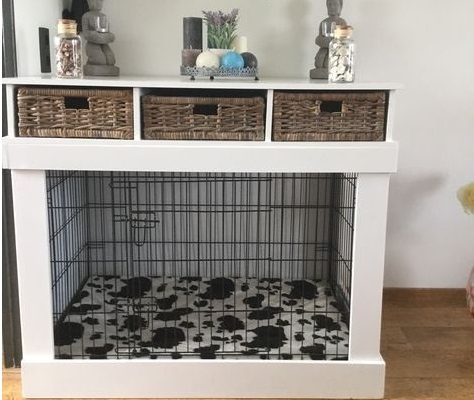
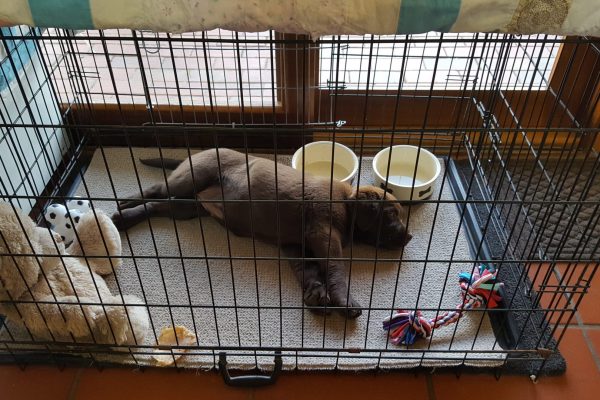
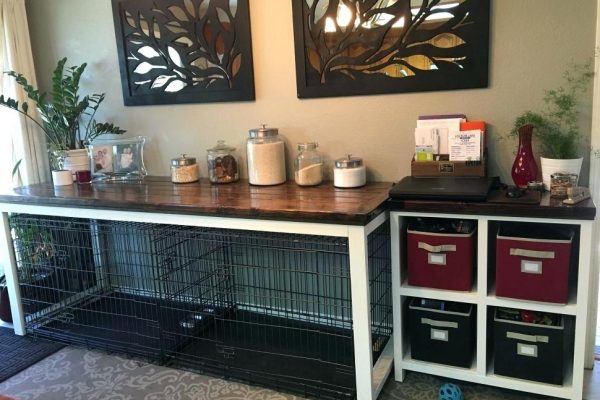
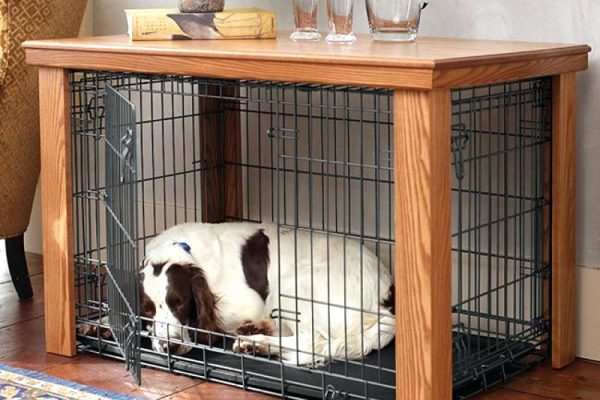
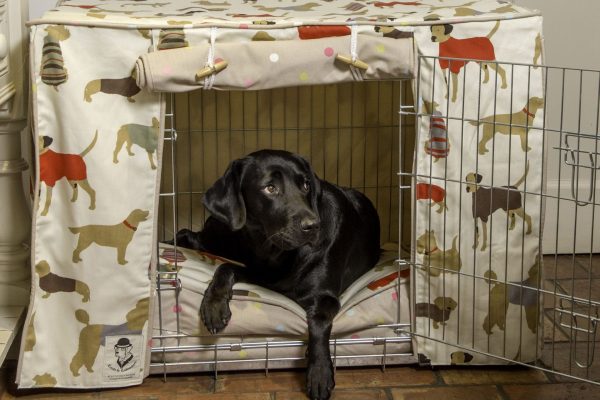
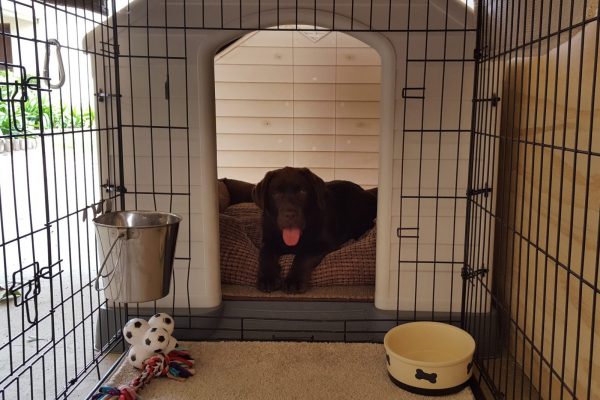
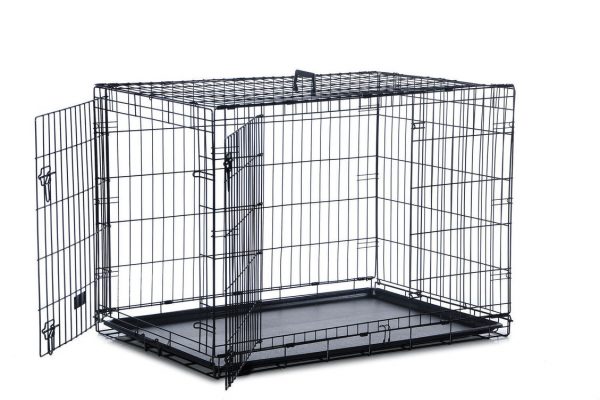
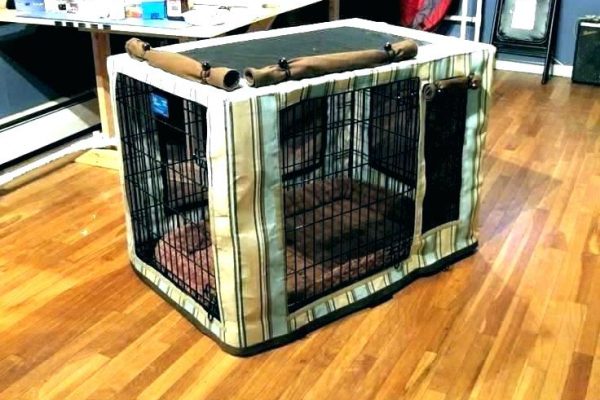
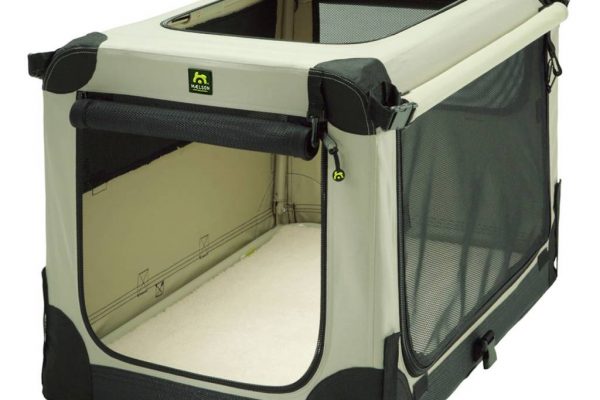
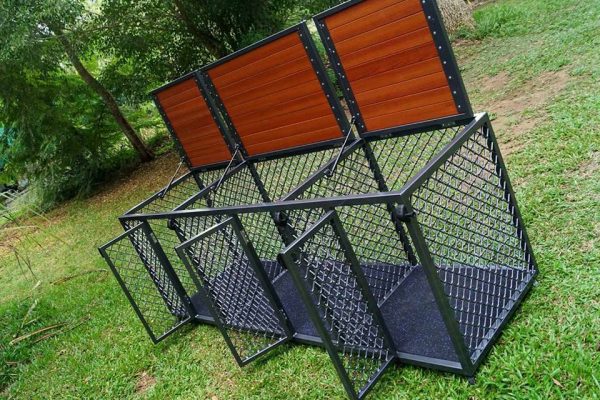
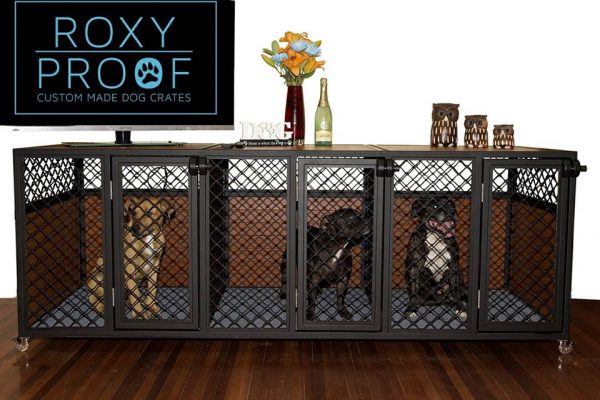
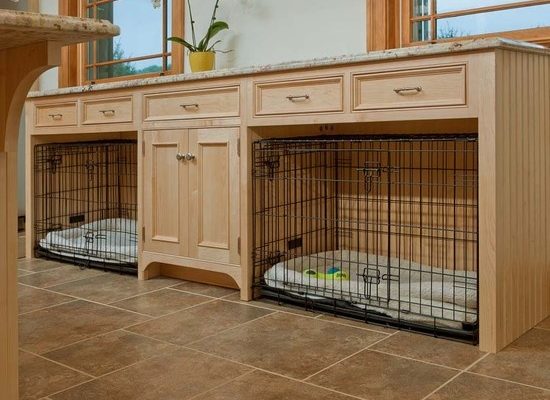
Toileting and crate training explained by Professional Dog Trainer
Professional Dog Trainer Larry Krohn talks about Puppy Toilet Training and Crate Training
Puppy Potty Training – House Breaking – Crate Training – Puppy Socialization
